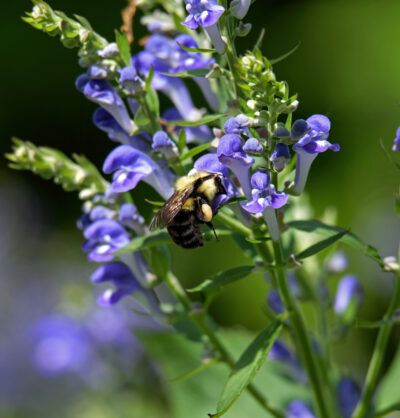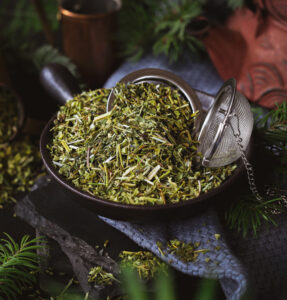
This month’s featured herb of the month is skullcap (Scutellaria lateriflora), best known as a calming, stress and tension relieving herb. Winter (especially in Moab) can be a wonderful time to ease into slower, more relaxing times, restore one’s sense of calm, and let go of tension held from busier seasons.
Botanical Description
Skullcap is a characteristic mint family member, with square stems, jagged edges of its leaves, and small tongue-like flowers. These flowers give the herb its common name, as they resemble the military helmets worn by early European settlers. This plant thrives near marshes, meadows, woodlands, and other wetland habitats in eastern North America.
Historical & Traditional Use
In the 1700s, European settlers learned to use skullcap from the Cherokees and other Native American tribes, who had traditionally used it as a tea to soothe nerves, for women’s health, and in ceremony. The Europeans believed the herb was an effective cure for rabies, giving it one of its other common names, mad dog weed. This claim did not prove to be true, but herbalists began recognizing its other valuable properties.
Herbal Benefits of Skullcap
Skullcap is often promoted for emotional well-being and relaxation during periods of distress. It also functions as a nervine, supporting overworked or exhausted nervous systems, and it is trophorestorative to the nervous system, meaning it restores nutrition uptake to the nerves. Skullcap also helps maintain balance in times of muscular tension and supports healthy sleep patterns.
Find dried skullcap in our bulk herbs and spices department. It makes a nice evening tea, especially when muscles are stiff, when you’re holding onto the day a little too tightly, or in anticipation of one’s menstrual cycle. It has a remarkable ability to help the body soften and release. To make a tea, add one teaspoon of dried herb to one cup of boiling water. Steep, strain, and enjoy.
The herb can also be tinctured or combined with other calming herbs in various preparations, such as valerian or chamomile.
